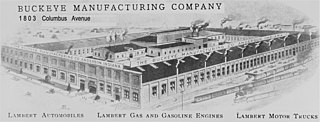
Moose Jaw is the fourth largest city in Saskatchewan, Canada. Lying on the Moose Jaw River in the south-central part of the province, it is situated on the Trans-Canada Highway, 77 km (48 mi) west of Regina. Residents of Moose Jaw are known as Moose Javians. The city is surrounded by the Rural Municipality of Moose Jaw No. 161.

The Snowbirds, officially known as 431 Air Demonstration Squadron, are the military aerobatics flight demonstration team of the Royal Canadian Air Force. The team is based at 15 Wing Moose Jaw near Moose Jaw, Saskatchewan. The Snowbirds' official purpose is to "demonstrate the skill, professionalism, and teamwork of Canadian Forces personnel". The team also provides a public relations and recruiting role, and serves as an aerial ambassador for the Canadian Armed Forces. The Snowbirds are the first Canadian air demonstration team to be designated as a squadron.

Palliser was a federal electoral district in Saskatchewan, Canada, that was represented in the House of Commons of Canada from 1997 to 2015.
Moose Jaw was a federal electoral district in Saskatchewan, Canada, that was represented in the House of Commons of Canada from 1908 to 1953 and from 1968 to 1988.
Moose Jaw—Lake Centre was a federal electoral district in Saskatchewan, Canada, that was represented in the House of Commons of Canada from 1953 to 1968 and from 1988 to 1997.

The Moose Jaw Warriors are a major junior ice hockey team in the Western Hockey League based in Moose Jaw, Saskatchewan. The Warriors play in the East Division of the Eastern Conference. The team plays its home games at Mosaic Place.
The Prairie Hockey League (PHL) was a Canadian professional ice hockey league in Alberta and Saskatchewan that was created following the demise of the Western Hockey League in 1926. It operated for two seasons.
Canadian Forces Base Moose Jaw, also known as 15 Wing Moose Jaw, is a Canadian Forces base located 4 nautical miles south of Moose Jaw, Saskatchewan. It is operated as an air force base by the Royal Canadian Air Force (RCAF) and is home to RCAF Pilot training and 431 Squadron, the Snowbirds, which is the RCAF's air demonstration squadron.
Highway 1 is the Saskatchewan section of the Trans-Canada Highway mainland route. The total distance of the Trans-Canada Highway in Saskatchewan is 654 kilometres (406 mi). The highway traverses Saskatchewan from the western border with Alberta, from Highway 1, to the Manitoba border where it continues as PTH 1. The Trans-Canada Highway Act was passed on December 10, 1949. The Saskatchewan segment was completed August 21, 1957, and completely twinned on November 6, 2008. The speed limit along the majority of the route is 110 kilometres per hour (70 mph) with urban area thoroughfares slowing to a speed of 80–100 kilometres per hour (50–62 mph). Portions of the highway—the section through Swift Current, an 8-kilometre (5 mi) section east of Moose Jaw, and a 44-kilometre (27 mi) section between the West Regina Bypass and Balgonie—are controlled-access. Highway 1 serves as a major east-west transport route for commercial traffic. It is the main link between southern Saskatchewan's largest cities, and also serves as the province's main link to the neighbouring provinces of Alberta and Manitoba.

The Moose Jaw Canucks were a junior ice hockey team based in Moose Jaw, Saskatchewan, Canada. They were one of the founding members of the Western Canada Junior Hockey League in 1966 following a rebellion within the Saskatchewan Junior Hockey League. The franchise evolved from the Moose Jaw Cubs in the early 1930s.

The Western Development Museum is a network of four museums in Saskatchewan, Canada preserving and recording the social and economic development of the province. The museum has branches in Moose Jaw, North Battleford, Saskatoon and Yorkton. Respectively, each branch focuses on a different theme: transportation, agriculture, economy, and people. The museum is affiliated with the Canadian Museums Association, the Canadian Heritage Information Network, and Virtual Museum of Canada.
Highway 2 is a provincial highway in the Canadian province of Saskatchewan. It is the longest highway in Saskatchewan at 809 km (503 mi). The highway is partially divided and undivided. However, only about 18 kilometres (11 mi) near Moose Jaw, 11 kilometres (7 mi) near Chamberlain, and 21 kilometres (13 mi) near Prince Albert are divided highway. Highway 2 is a major north-south route beginning at the Canada–US border at the Port of West Poplar River and Opheim, Montana customs checkpoints. Montana Highway 24 continues south. It passes through the major cities of Moose Jaw in the south and Prince Albert in the north. Highway 2 overlaps Highway 11 between the towns of Chamberlain and Findlater. This 11 kilometres (7 mi) section of road is a wrong-way concurrency. The highway ends at La Ronge, where it becomes Highway 102.

HMCS Moose Jaw was a Royal Canadian Navy Flower-class corvette which took part in convoy escort duties during the Second World War. Together with HMCS Chambly, she achieved the RCN's first U-boat kill of the war. She was named after Moose Jaw, Saskatchewan.

Highway 39 is a provincial, paved, undivided highway located in the southern portion of the Canadian province of Saskatchewan connecting North Portal and Moose Jaw in the north. This is a primary Saskatchewan highway maintained by the provincial and national governments and providing a major trucking and tourism route between the United States via Portal, Burke County, North Dakota, and North Portal, Saskatchewan. On July 3, 2000, Highways and Transportation Minister Maynard Sonntag officiated at the ribbon cutting ceremony opening the new duty-free shop and the twinned highway at Saskatchewan's busiest border crossing. Highway 39 is one of Canada's busiest highways, facilitating transport for $6 billion in trade goods via approximately 100,000 trucks over the year. The entire length of highway 39 is paved. The CanAm Highway comprises Saskatchewan Highways Hwy 35, Hwy 39, Hwy 6, Hwy 3, as well as Hwy 2. 44.3 miles (71.3 km) of Saskatchewan Highway 39 contribute to the CanAm Highway between Weyburn and Corinne. Highway 39 is divided or twinned in two areas at North Portal as well as north of Weyburn for 1.7 kilometres (1.1 mi). The junction of Hwy 39 with the Trans–Canada divided four-lane highway is done via a "Parclo" or partial cloverleaf interchange.

The Buckeye Manufacturing Company was a company founded in 1884 by John William Lambert and his family members originally to manufacture horse drawn buggy parts in Union City, Ohio. The enterprise started with $2,000 and six men and some helper boys. The company got involved in making tools and one early horseless carriage automobile.
Herman Henry Kemper was an American-born farmer and political figure in Saskatchewan. He represented Gull Lake in the Legislative Assembly of Saskatchewan from 1934 to 1938.
The Southern Rails Cooperative Ltd. (SRCL) is a Canadian short line railway company operating on trackage in southwest Saskatchewan. Southern Rails Cooperative was the first shortline railway to operate in Saskatchewan and operated as the first modern common carrier shortline railway. The railway is a farmer owned co-operative that operates two short-line railways in Saskatchewan, totalling 71 km of trackage: the former Canadian Pacific Railway Colony subdivision that runs from Rockglen to Killdeer, and the former Canadian National Railway Avonlea subdivision that runs from Avonlea to Parry, The company subsequently expanded along the Avonlea subdivision into Moose Jaw.

The Juno Awards of 2013 honoured Canadian music industry achievements in the latter part of 2011 and in most of 2012. The awards were presented in Regina, Saskatchewan, Canada, during the weekend of 20–21 April 2013. The main ceremony was hosted by Michael Bublé at the Brandt Centre. The city of Moose Jaw also hosted some supporting events.

Moose Jaw River is a river in the Canadian province of Saskatchewan. It is located in the southern part of the province in a region called the Prairie Pothole Region of North America, which extends throughout three Canadian provinces and five U.S. states. It is also within Palliser's Triangle and the Great Plains ecoregion.











